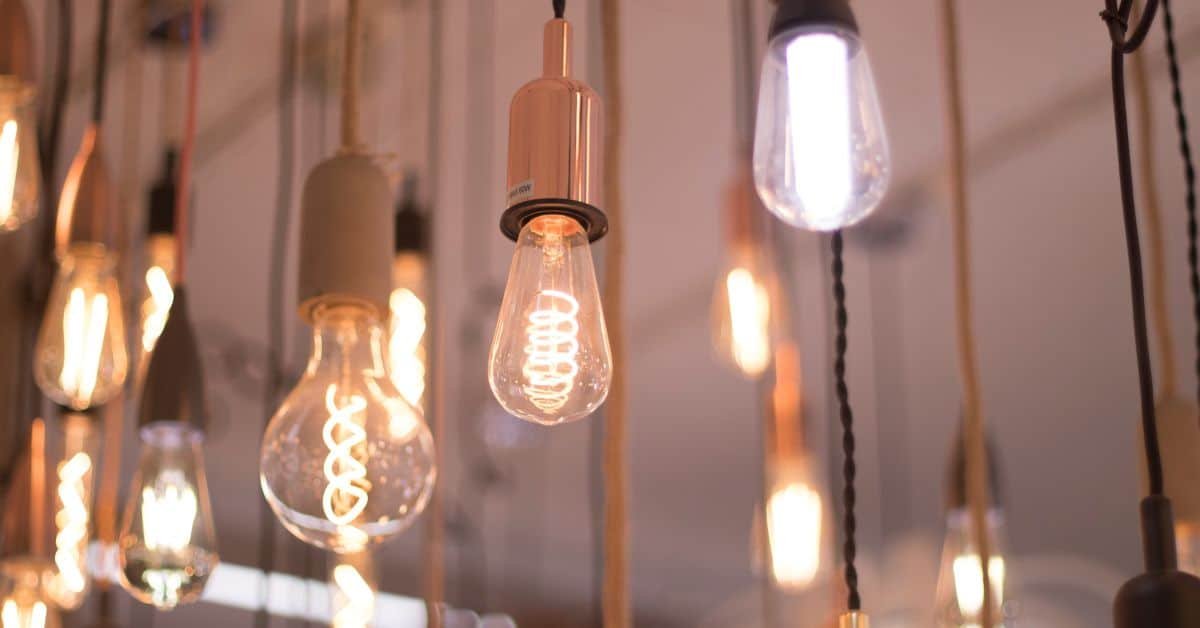Do you know that LED bulbs provide 90% more efficiency, as compared to inefficient incandescent bulbs? Although LED bulbs are more permanent than halogen bulbs and use less electricity, they will one day have to be recycled. It is therefore advisable to learn how to recycle LED light bulbs.
In this guide, we will walk you through the simple steps to recycle your LED bulbs properly. Finally, you will be enlightened on the proper way to dispose of the elements of an LED light bulb.
Are LED Bulbs Recyclable?
To the great surprise of many people, LED bulbs are actually recyclable products! This is one of the reasons for using LEDs over other types of bulbs, like incandescent or halogen. The bulb’s constituents are nearly fully recoverable; every segment of the bulb can be subverted.
Unlike traditional bulbs, LEDs, as a rule, are marked by a symbol showing a crossed-out trash bin. This symbol informs the public that the bulb should not be disposed of through a normal domestic waste disposal system. Instead, they are constructed to be recycled to minimize the amount of waste and the utilization of natural resources.
Valuable materials like metals, plastics, and electronic components can be reclaimed by recycling LED bulbs. These components can also be employed in the fabrication of other products. Thus, we can promote the use of sustainable practices, thereby improving the environment.
Why Should You Recycle LED Light Bulbs?
LED light bulbs can be recycled to reduce their harm to the environment. The substances used in these bulbs, like glass, metal, and plastic, are recyclable. It will be of great help to save the Earth’s rapidly diminishing resources. Plus, it can lessen the volume of junk content on the world’s dump sites.
At the same time, recycling practices can prolong the lifespan and efficiency of your lighting solutions. In fact, up to 95% of an LED bulb can be recycled, as indicated by a survey by GreenTech Solutions.
This is a plus in that most parts of the bulb can be recycled to form the basis of new products. However, not every recycling facility disassembles LEDs, and the expenses for the separation of the materials are too high.
LED Bulb Breakdown: What’s Inside and How It Works
The first thing you should know if you are asking “How are LED bulbs recycled?” is the individual parts of it. Each part of an LED bulb has its own recycling process. As such, in the event that you are aware of which parts of an LED are recyclable, you can dispose of them appropriately.
Indeed, an LED light bulb transcends the mere light bulb tag; it is a gadget made of the following main components:
-
- Circuit Boards: Every LED bulb has a printed circuit board known as the PCB that harbors resistors, capacitors, and semiconductors. These can be disassembled and recycled to obtain metals such as gold, silver, and copper.
-
- Aluminum: Most LED bulbs have heat sinks, usually made of aluminum, to release heat. Aluminum has a high recycling rate. When managed properly, it can be recycled up to 100 percent.
-
- Copper: LED bulbs can have copper installations in the form of wiring or other parts. Copper is another type of metal that is very easy to recycle.
-
- Plastic Housing: The outer casing of most LED bulbs is made from durable plastic. Not all plastics are recyclable, but the ones used in LED bulbs usually are. So, recycling LED bulbs can reduce the volume of plastic that ends up in landfills.
-
- LED Chips: The actual light-emitting diodes are tiny semiconductor devices that convert electricity into light. It is possible to recycle these chips. However, the process is more complex and specialized compared to other components.
Hazardous Materials in LED Light Bulbs
Although most of the constituent components of an LED bulb can be recycled, there are dangerous substances that should not be released into the environment. Be extra careful while disposing of the following materials in an LED bulb:
-
- LED Drivers: Some LED bulbs include drivers that regulate power to the LEDs. These can contain small amounts of hazardous substances that should not be thrown in regular trash. You must recycle these parts properly to prevent environmental contamination.
-
- Other Non-Recyclable Parts: Sometimes, LED bulbs contain components that are rarely recyclable or even non-recyclable. In such cases, these parts have to be removed and disposed of according to local hazardous waste guidelines.
How to Recycle LED Light Bulbs: 3 Steps to Do It Safely
No doubt, recycling LED bulbs is a major step in reducing electronic waste and promoting sustainability. However, the process requires careful handling to ensure safety. Plus, you can maximize the recycling potential of each component through proper recycling.
To recycle your LED light bulbs safely and effectively, you should follow these key steps:
Step 1: Prepare LED Bulbs for Recycling
All in all, LED bulbs are longer-lasting than traditional light bulbs. But they can crack if mishandled. So, when replacing the bulbs, it is advisable to wear gloves to avoid cuts or exposure to any internal components.
Also, if you are accumulating several bulbs for recycling, store them in a sturdy container. Make sure they are not packed too tightly to avoid breakage. Use bubble wrap or other cushioning material to protect the delicate components of the bulb.
Moreover, assign a label to the container with the type and number of bulbs if the recycling center requires it. This can streamline the recycling process once you arrive at the drop-off location.
Step 2: Find Recycling Centers
Not all recycling centers accept LED bulbs, so it is important to do a bit of research. Start by searching online to find recycling centers that accept LED bulbs. In this case, you can contact your local waste management authority. Some areas have specific drop-off locations for electronic waste, including LED bulbs.
Many major retail stores, such as IKEA and Home Depot, have take-back programs in which you can return used LED bulbs for recycling. The good news is that these programs often partner with certified recyclers. Thus, you are assured that the bulbs will undergo the proper processing.
Some communities organize special collection events for electronic waste, where you can bring LED bulbs and Compact Fluorescent Lightbulbs (CFLs) for safe disposal. All you have to do is wait for announcements from your local government or environmental organizations. So, hopefully, you are not asking yourself, “Where do you recycle LED bulbs?”
Step 3: Mail-in Recycling Programs
If you don’t have access to local recycling options, mail-in programs are a convenient alternative. Several companies, like Veolia and Republic Services, offer mail-in recycling services for LED bulbs. Research these services to find one that aligns with your needs. Just make sure the company is certified to handle electronic waste.
Follow the company’s specific instructions for packaging your LED bulbs. Typically, you might have to use a sturdy box, cushioning materials, and a prepaid shipping label. Don’t sweat, since these items will be provided by the service.
Once packaged, drop off the box at your local shipping center or arrange for a pickup. The service will then handle the recycling process. They are fully responsible for disposing of your LED bulbs in an environmentally friendly way.
Smart Tips for Reducing LED Waste and Saving Energy
If you have come this far, you might have learned how to recycle LED light bulbs. With that said, you can extend the life of your LED bulbs and make more sustainable choices by learning the tips below.
Avoid Frequent Switching
While LED bulbs are generally durable, frequently turning them on and off can shorten their lifespan. Usually, in living rooms or kitchens, lights remain on for extended periods of time. Consider using LED bulbs in such places to reduce wear and tear.
Temperature Control
LED bulbs can overheat, so they need proper ventilation. So, don’t keep them in enclosed fixtures. Either make sure there is adequate airflow around your fixtures or choose bulbs that are designed for enclosed spaces. This will extend the life of the LED bulbs.
Look for Energy Star Certification
Energy Star-certified LED bulbs meet stringent quality and energy efficiency standards. These bulbs are designed to last longer and perform better. As a consequence, you don’t have to look for frequent replacements.
Consider Smart Lighting Systems
Smart lighting systems allow you to control your lights remotely, set schedules, and adjust brightness levels. As a result, you can use energy more efficiently and extend the life of your bulbs.
Consider Dimmable Options
You can adjust the light intensity according to your needs with dimmable LED bulbs. So, you can conserve energy and extend the bulb’s lifespan. To avoid any issues, make sure your dimmable bulbs are compatible with your dimmer switches.
Educate Yourself on Lumens, Not Watts
When purchasing LED bulbs, focus on lumens (brightness) rather than watts (energy consumption). You can get the desired light output while using less energy with the knowledge of lumens. Hence, this knowledge can further reduce waste.
Check the Warranty
High-quality LED bulbs often come with longer warranties, which is a good indicator of their durability and reliability. Choosing bulbs with solid warranties can save you money in the long run and reduce waste.
FAQ
Are LED drivers and power supplies recyclable?
Yes, LED drivers and power supplies can be recycled through E-Waste collection centers and recycling campaigns. Many hardware stores, like Lowe's and Home Depot, as well as electronics retailers such as Best Buy, may accept them. In every case, you should consult with your local store first.
Are LED light bulbs, like CFL bulbs, considered Household Hazardous Waste (HHW)?
LED light bulbs are not referred to as HHW when they are discarded. But older LED bulbs may contain a small amount of heavy metals, such that they should be properly disposed of at a hazardous waste drop-off point.
Does disposing of LED light bulbs go against the law?
In the U.S., they can be discarded since they do not fall under the category of hazardous waste. But recycling them is far more environmentally friendly than disposing of the old ones. Perhaps mandatory LED recycling will be adopted in the future as a law.
Bottom Line
Recycling LED light bulbs is a simple yet crucial task. We can reduce electronic waste and support environmental sustainability by completing this task. Now that you know how to recycle LED light bulbs, you can properly process valuable materials like electronic circuitry. Also, you will be aware not to throw them in the trash.
For further assistance or more information on recycling and sustainable lighting practices, don’t hesitate to reach out to us. Your efforts to recycle LED bulbs can contribute to a greener planet.

